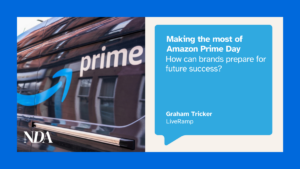By Ronan Gallagher, Head of Omnichannel at Stor, a Trust Payments company
The retail market is evolving globally at pace, and payments are no different. Customer needs have shifted dramatically over the past two-plus years. From cashless and crypto to NFTs and virtual shopping – digital is demanding more from merchants than ever before.
Retailers have experienced the closure of high streets, a monumental shift online and supply chain pressures. For the many brands born out of the pandemic and established industry players, payments and decisions relating to payments have been crucial in navigating the digital nature of today’s world.
Alternative payments are increasing and becoming smoother to adopt. People are naturally progressing towards using digital as their primary method to pay. Cashless is becoming the leader and retailers must keep up to stay on top.
Innovative alternative payments
Alternative payments are pushing the boundaries of purchase possibilities. Consumers want choice and flexibility at checkout. With this in mind, retailers must offer various global payment methods, through multiple channels, for a best-in-class blended shopping experience.
Buy Now Pay Later (BNPL) gives customers the power to pay for items with credit or interest-free instalment options. According to a recent report, Buy Now Pay Later (BNPL) will amount to $680 billion in transaction volume worldwide in 2025. Offering this alternative payment can increase reach and is a solution for customers wanting to make a low financial commitment and pay at a time that better suits them.
The latest eWallets, such as Google and Apple Pay, alongside other digital payment methods, meet demands for contactless options for speed and convenience. These alternative settlement methods make the purchasing process simpler than ever before. Online payments through smartphone applications mean retailers can better target the emerging digital-driven generation with increased buying power.
Payment channels
Not only is the type of payment method important, but the channel too. Retailers must connect their payment methods online, in-app, and in person. Merchants offering contactless payment connectivity alongside Apple, Samsung and Google Pay capabilities is fundamental.
To seamlessly bridge alternative payment methods across all merchant channels places the utmost importance on partnerships with fintech and tech providers. Retailers can harness their expertise in the industry to establish themselves as market leaders.
The shift towards a cashless society and the focus on data and insights highlights that retailers will have minimal success unless they can evolve. Partnerships will help bring innovation into focus and build shopper loyalty through value-added services.
A new era for commerce
Merchants are starting to combine different value propositions to meet the demand for new and innovative ways to buy. This concept, also known as Converged Commerce, is transforming e-commerce and enabling brands to be resilient to fast-moving trends by layering offerings to maximise omnichannel customer experiences, loyalty and sales.
Retailers can use alternative currencies, online, offline and mobile add-ons and customer data to create powerful and intuitive commerce opportunities. For example, abandoned cart reminder features, discount add-ons and optimised checkouts are essential to personalise purchases. Services and tools such as loyalty management and instant e-commerce, combine to create engaging, new and innovative payment methods.
Today’s consumer is accustomed to the advantages of leveraging both online and offline channels for an effortless, economical shopping experience. Implementing the concept of Converge Commerce into practices will result in a unified view of the customer to deliver deep and meaningful customer relationships long-term.
Challenging the buying future
The retail industry is a saturated marketplace, and there are many established and challenger brands offering innovative payment solutions. Smartphones and digital ways to pay are catching up with plastic cards in popularity, and retailers must be prepared to meet these shifts to remain competitive.
Alternative payments provide retailers with a unique selling proposition that maximises the use of partner services, features and tools to layer tech infrastructure in a tailored way never done before.
Buy Now Pay Later (BNPL) makes short-term lending and payment plans more accessible, and digital wallets meet the need for convenience and speed. By not offering these innovative payment methods, retailers risk missing out on a significant consumer market and increasing checkout abandonment.
As retailers look to maximise their omnichannel strategies post-covid and virtual and physical shopping continues to blur, bridging the gap between payments and e-commerce offerings will be key. By layering payments with other features and add-ons will heighten the customer experience, drive loyalty and yield better results from data-rich information.
It’s an exciting but challenging time for retailers, and harnessing the power of payment to create differentiation can leave a lasting impression.









